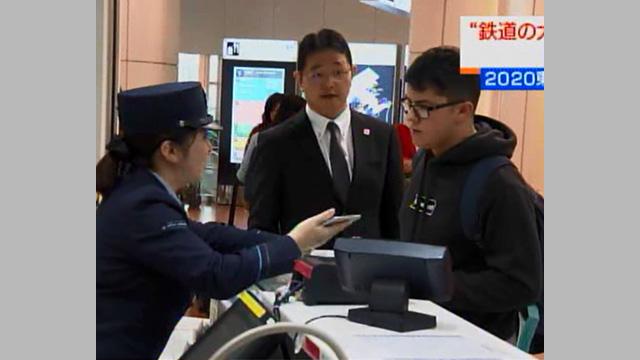About 8 million people use trains in the metropolitan area every day. That's expected to increase by 700,000, or around 10% a day during the Olympics, thanks to an influx of visitors -- and it could have a serious impact.
Professor Azuma Taguchi of Chuo University, an expert on transportation networks, performed simulations of congestions at stations and on trains during the Olympic period. He says if visitors take trains during the morning rush hour, the number of trains with congestion rates of over 200 percent increase by 50 percent.
The results also show the number of passengers may increase by up to around 20 percent at Shinjuku station -- a hectic and crowded terminal served by more than 10 railway lines.
Taguchi explains that the station is always at the brink of a jam-up that's narrowly avoided because passengers are used to the crowds and can move in an orderly way. He thinks that if people unaccustomed to the Japanese language or to changing trains get stranded with large amounts of luggage, major confusion could follow and trains services could be halted.
Luggage service, automatic translation app, and more
To avoid that, Keikyu Corporation, which operates a railway line linking Haneda Airport and central Tokyo, launched a service to deal with the luggage visitors bring from abroad. It delivers their luggage from the airport to their hotels by car within the day to ease congestion on its trains. A passenger from Hong Kong says the service is very convenient, as she wants to do a lot of shopping.

Keikyu also introduced a new tool to help foreigners who are lost. It developed an app that translates Japanese into English, Chinese, and Korean. The company adopted the app on a trial basis in April, and plans to introduce it in all 70 of its stations by July. It hopes that the app will enable staff to direct passengers smoothly and prevent overcrowding.
A company that offers transit navigation apps is also stepping up its services. Its new features include a congestion forecast, which offers information on crowding at various stations according to the time. When a major event approaches, many users check train routes to a specific station on the company's app. The company collects such data real time to calculate congestion levels.
The company is also considering suggesting alternative routes to a certain proportion of users to avoid concentration on a single route.
A company official says its aim is to disperse crowding. He wants users to make full use of its route search app to enable smooth travel.
Professor Taguchi says such efforts will be effective to a certain degree. He says building new stations or railway lines would solve the problem, but doing so just for the sake of the Olympics is inefficient. He says the best solution would be for companies to diversify their employees' commuting hours or days.
The Tokyo metropolitan government and Tokyo Organizing Committee of the Olympic and Paralympic Games are also studying ways to ease congestion on trains and roads. They plan to work with railway companies and others to take concrete steps.
